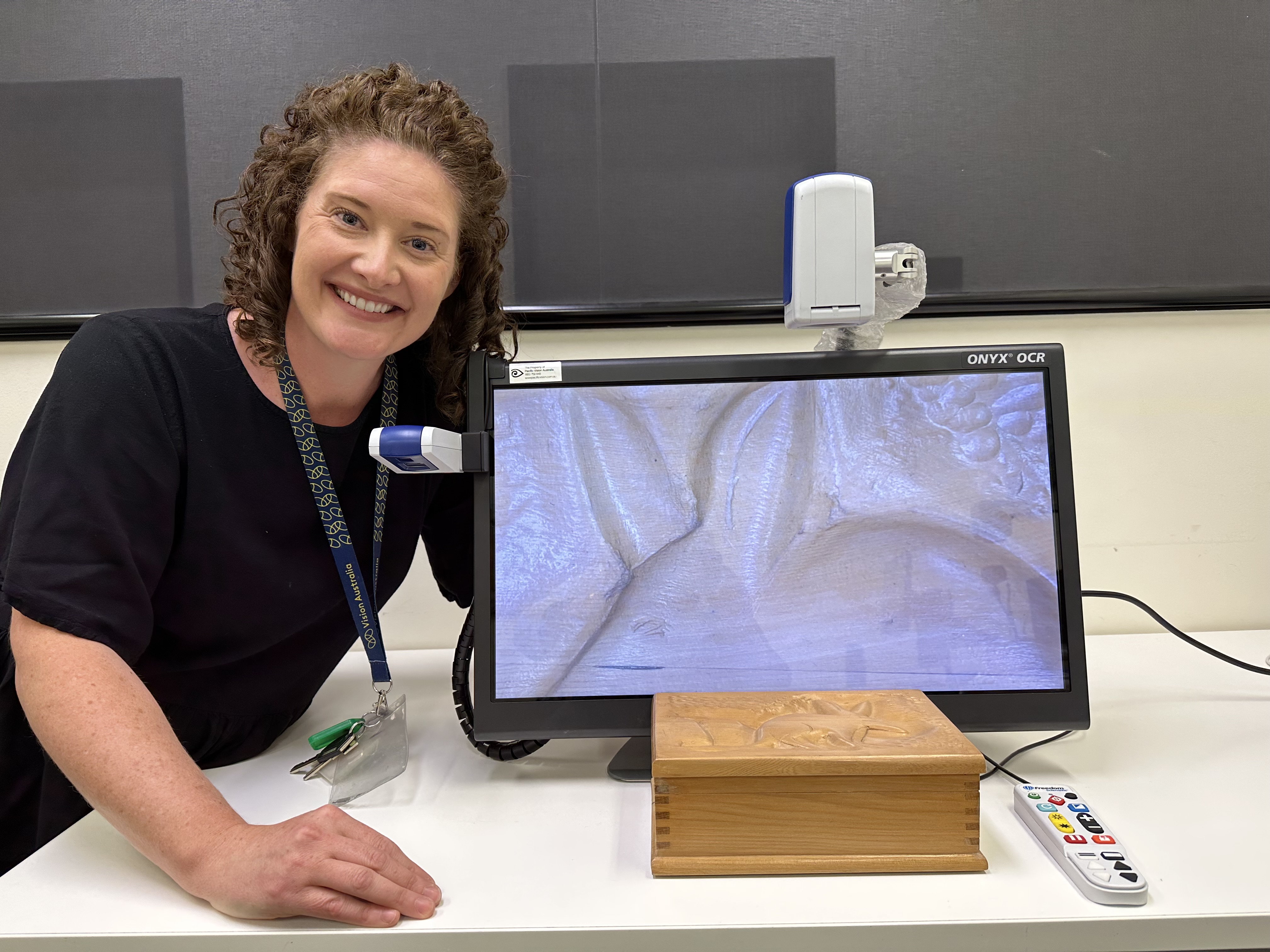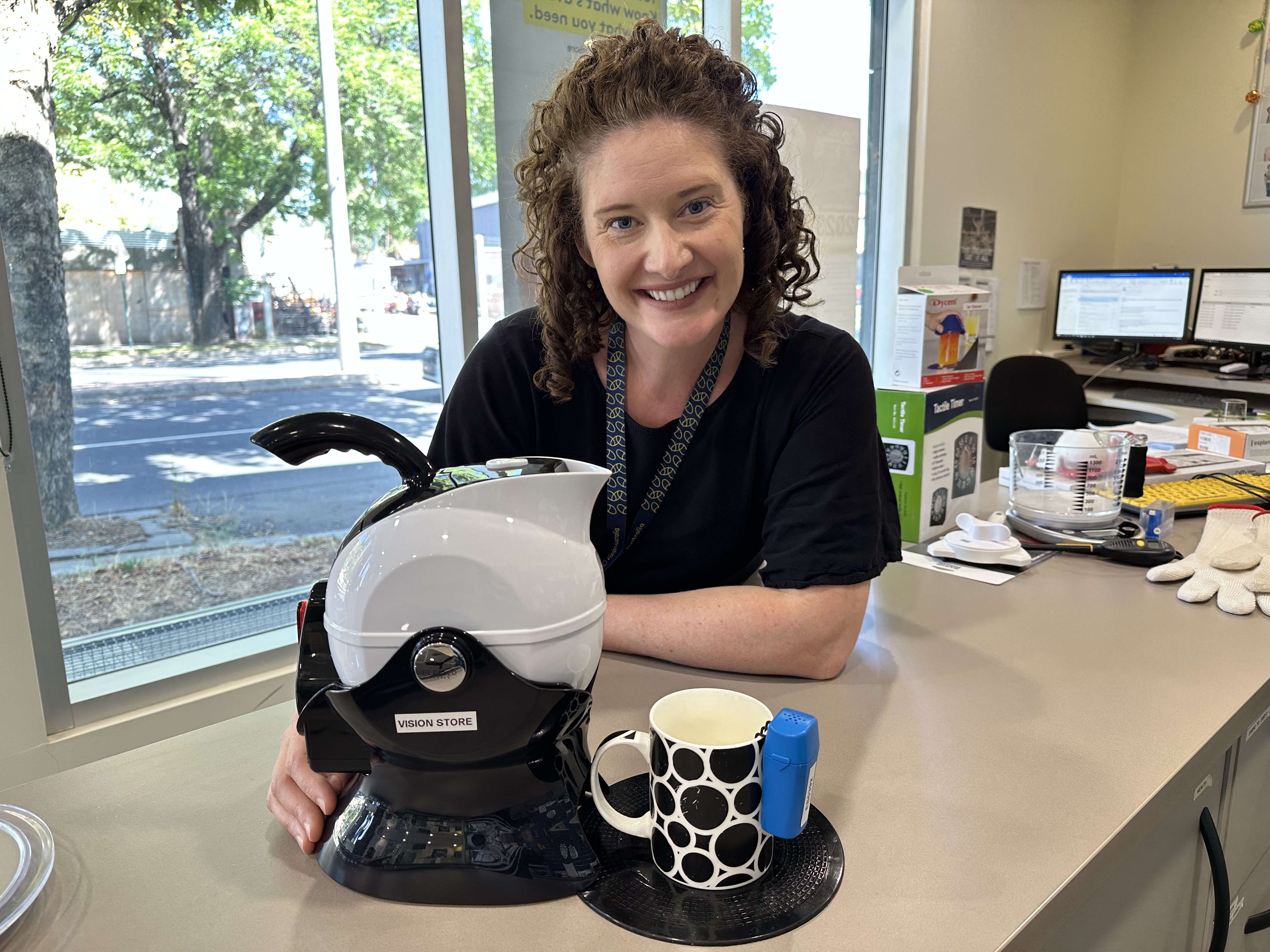Meet the team of product experts

Vision Australia - Occupational Therapist Alexandra (Alex) Lonsdale
Alex is cherished for her enthusiasm, passion and commitment to upholding high quality patient care in the low vision sector. The gaps in knowledge she has identified in the sector and amongst external Occupational Therapists has been the motivating factor to the paper she co-authored Lonsdale, Rix, Stewart (2017).
Alex is an ambassador for Vision Store and continues to raise awareness of the importance of partnering with all Occupational Therapists to provide functional solutions to those with a vision condition. Here is her story.
1. How does a low vision OT differ from any other OT?
We work to promote occupational performance by maximizing functional vision in the everyday things we do such as taking care of oneself, participating in hobbies and/or working.
2. Why did you choose to work in Vision Store at Vision Australia?
Working in Vision Store diversifies my clinical skills. I am able to connect with our clients to find solutions and remove barriers whilst working within a multidisciplinary team. I have first-hand access to the latest adaptive technology.
3. What are your most recommended products?
When sourcing products as a solution, I start small. Small solutions that make big impacts on wellbeing and confidence. Here are a few products that have made a remarkable difference:
- Liquid Level Indicator for enhancing independence and safety in preparing a hot drink. When pouring liquid, this device makes a sound when the cup is almost full. It is astonishing to be alerted to the amount of times boiling liquid has been spilt or that clients have used their finger to measure the amount of hot liquid in a cup!
- Introducing an audible Soccer Ball into mainstream schools. This has allowed students to participate and engage in P.E. and participate in group activities during breaks.
- The new Vision Buddy allows clients to watch tv or participate in gaming. An elderly client of mine expressed how meaningful keeping up with his favourite shows was to his everyday wellbeing. My role has been the bridge in sourcing these tools to fulfil the needs of our community.
4. Can you share a memorable client story?
Years ago, a dear client with low vision visited me in store and presented me with an intricate wooden jewellery box. On this jewellery box was a finely carved bilby he wanted to gift to me. The gentleman explained how the desktop electronic magnifier I recommended, enabled him to take up woodwork again. This jewellery box made itself a home on my desk and is a daily reminder of the opportunities that await with finding solutions that really help people.
Occupational Therapy is so broad and it’s about finding your niche area of practice. I was lucky to come to Vision Australia as a new grad and discover my passion in low vision and blindness.
I have enjoyed developing my awareness and understanding from a client’s perspective. In fact, I have learned by best compensatory strategies directly from clients. From painting finger nails, applying make-up to changing nappies!
Working in low vision gives me the opportunity to enhance everyday independence for the lady who dips her finger in hot water or the gentleman who is able to continue his woodwork; and for that, I am forever devoted to spreading the message and partnering with you on your journey to support those with vison loss.

Lonsdale, A., Rix, C., & Stewart, K. (2017). Working with people living with visual impairment. In M. Curtin, M. Egan, & J. Adams (Eds.), Occupational Therapy for People Experiencing Illness, Injury or Impairment: Promoting Occupation and Participation (pp. 559-581). Elsevier.

